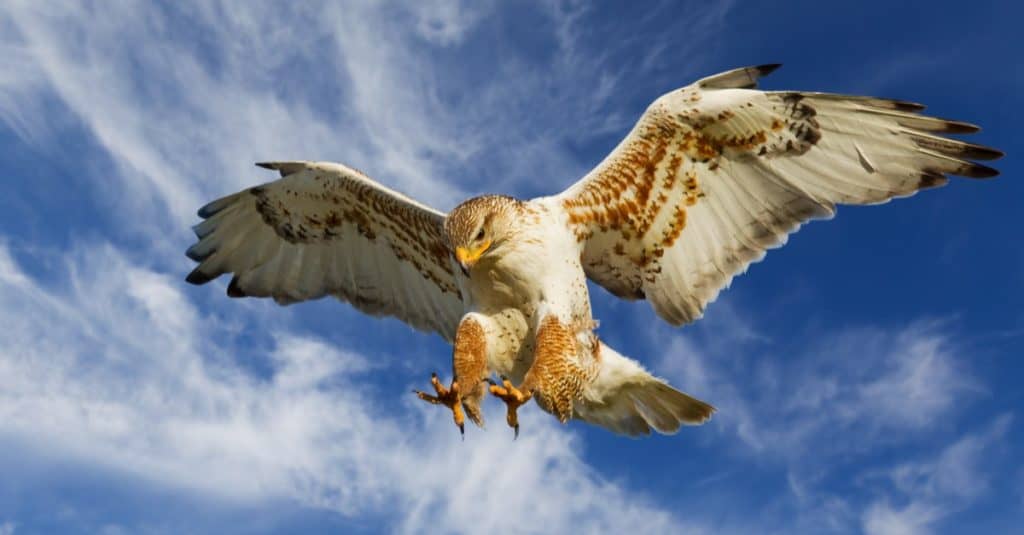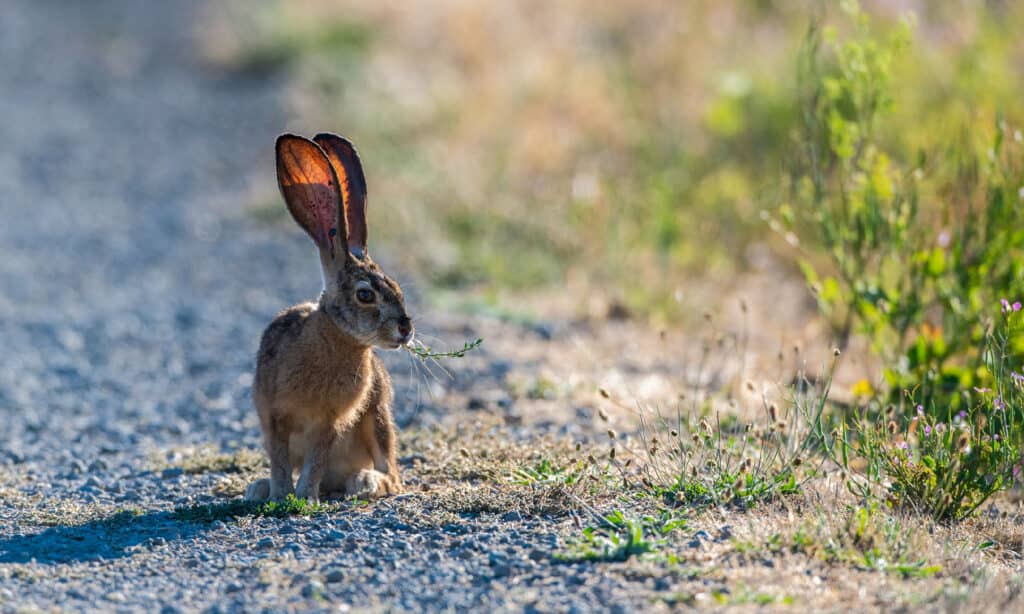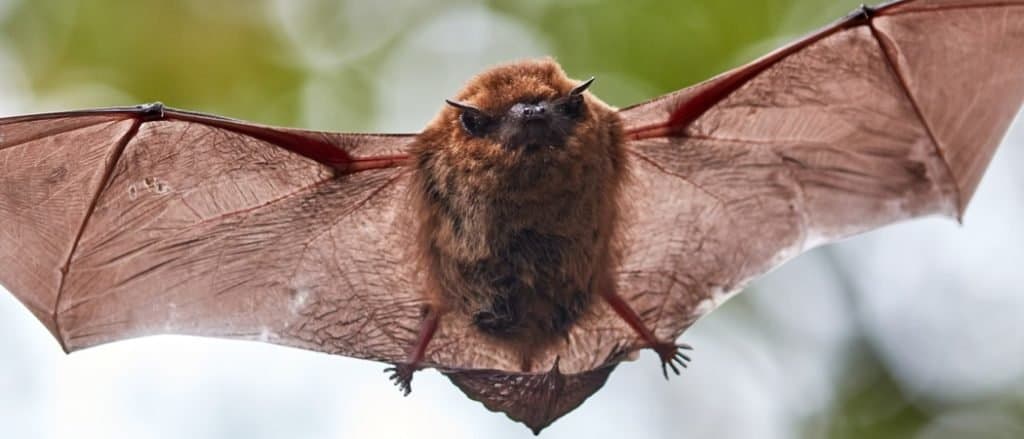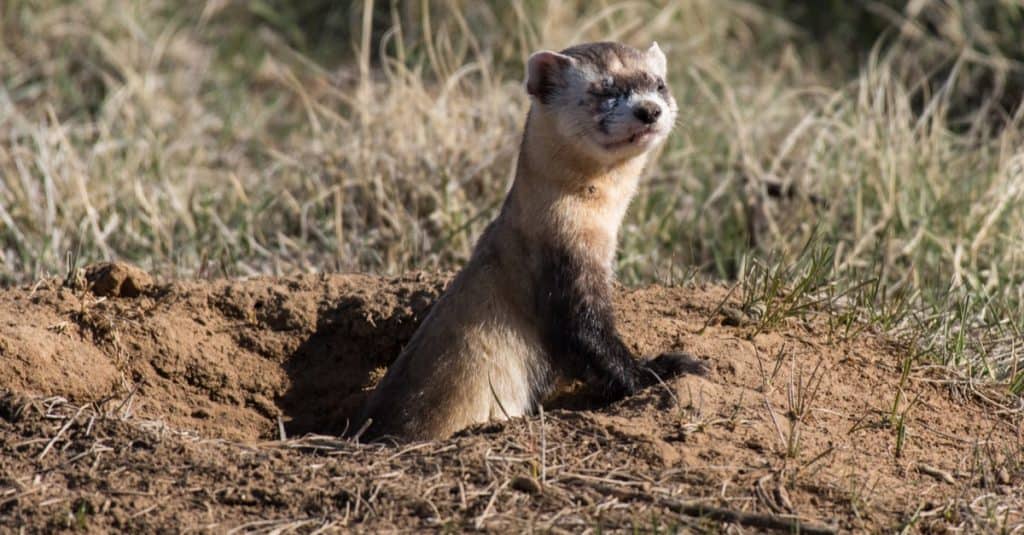The Cornhusker State is famous for agricultural production and vast prairies, but it also contains more acres of wetlands than other surrounding states. Nebraska has miles of farmland, marshes, meadows, forested swamps, and all kinds of prairies. These unique environments allow diverse plants and animals to thrive, including speedy land mammals and swift fliers. Discover the fastest animals in Nebraska, including where they reside and why they are so quick.
1. Ferruginous Hawk – 150 mph

Ferruginous hawks are one of the largest hawks in Nebraska.
©Stephen Mcsweeny/Shutterstock.com
The ferruginous hawk is a large bird of prey native to North America, where it inhabits open spaces, like grasslands and prairies, in the western United States. It is one of the largest hawks in Nebraska and primarily resides in the state’s western half. Its typical cruising speed is between 20 and 40 miles per hour, but its diving speed reaches 150 mph! Aided by wind and gravity, the ferruginous hawk can get intense rates as it swoops for its prey mid-air. It can also dive and snatch its target from the ground before sweeping back up and returning to its perch.
2. Coyote – 40 mph

It is common to see coyotes in Nebraska.
©Mircea Costina/Shutterstock.com
Coyotes are medium-sized wild canines native to North America, and their population in Nebraska has increased over the years. They reside in prairies, agricultural fields, and creek bottoms and are relatively common throughout the state. Coyotes are quickly becoming a nuisance in many areas around the country, as they can threaten humans and pets. The average dog can run up to 30 miles per hour, while the coyote can exceed 40 mph. These canines have adapted over time to keep up with swift prey like rabbits, making them effective predators.
3. Black-Tailed Jackrabbit – 40 mph

You can find black-tailed jackrabbits majorly in the southern half of Nebraska.
©iStock.com/zhuclear
The black-tailed jackrabbit is a native hare to the western United States and Mexico, where it inhabits open areas like deserts, farms, and scrublands. You can find this species throughout Nebraska, with the largest concentration in the southern half of the state. These desert hares are speedy creatures, running up to 40 miles per hour and leaping a distance of 20 feet. They have strong hind legs that propel them forward, and they often move in a zig-zag pattern when fleeing danger. The jackrabbit lives in constant threat of natural predators and must be quick to outrun animals like coyotes and hawks.
4. White-Tailed Deer – 35 mph

White-tailed deer need their speed for survival.
©Tom Reichner/Shutterstock.com
The white-tailed deer is native to the Americas and is one of the most common animal species in Nebraska and its state mammal. These medium-sized deer are abundant throughout the state and reside in every county. However, they have larger populations in the east and riparian corridors. Deer are surprisingly speedy, reaching a max speed of 35 miles per hour. They have long, powerful legs, which can leap over tall obstacles without missing a beat. And because they are prey animals, their speed is necessary for survival. While white-tailed deer are often hunted for sport and preyed on by larger animals, they are not always easy to catch.
5. Hawk Moth – 30 mph

Hummingbird hawk moths use their long proboscis like a straw to suck nectar from flowers.
©aabeele/Shutterstock.com
Hawks moths, or sphinx moths, are long-distance travelers found throughout the world. Several different sphinx moths reside throughout Nebraska, residing in many habitats, such as gardens, woodlands, and urban areas. They are nicknamed “hummingbird moths” due to their rapid wing movements, which allow them to move forward and backward like a hummingbird. These insects can travel up to 30 miles per hour and can stop and hover over blossoms. They feed very frequently to give themselves enough energy to fly at these intense speeds, rapidly fluttering their wings up to 70 beats per second.
6. Little Brown Bat – 22 mph

Little brown bats have aerodynamic body shapes.
©Bernd Wolter/Shutterstock.com
The little brown bat is an endangered species native to North America and resides primarily in the eastern third of Nebraska. However, you can find them throughout the state, roosting in man-made structures, caves, tree hollows, and wood piles. These bats travel around 12 miles per hour on average, but they can reach a max speed of 22 mph. Bats have aerodynamic body shapes and long, narrow wings with pointed tips that allow them to reach quick speeds.
7. Black-Footed Ferret – 15 mph

Efforts were made to reintroduce black-footed ferrets back into Nebraska.
©Kerry Hargrove/Shutterstock.com
Black-footed ferrets are native to Central North America and the only ferret species endemic to the continent. These ferrets are part of Nebraska’s historical range and once roamed the state’s grasslands along with prairie dogs. Today there are efforts to reintroduce their population back into Nebraska. Ferrets are highly energetic and love to play, run, and jump. They can reach speeds up to 15 miles per hour when playing or fleeing danger but will need to rest for several hours to re-energize. These sprightly mammals have thin protrusions on their spines, which give them better movement and flexibility.
Up Next:
- Discover the Fastest Animals in Virginia
- Discover the Fastest Animals in Washington
- Discover the Fastest Animals in Indiana
- Discover the Fastest Animals in Kansas
The photo featured at the top of this post is © Chris Rosario/Shutterstock.com
Thank you for reading! Have some feedback for us? Contact the AZ Animals editorial team.






